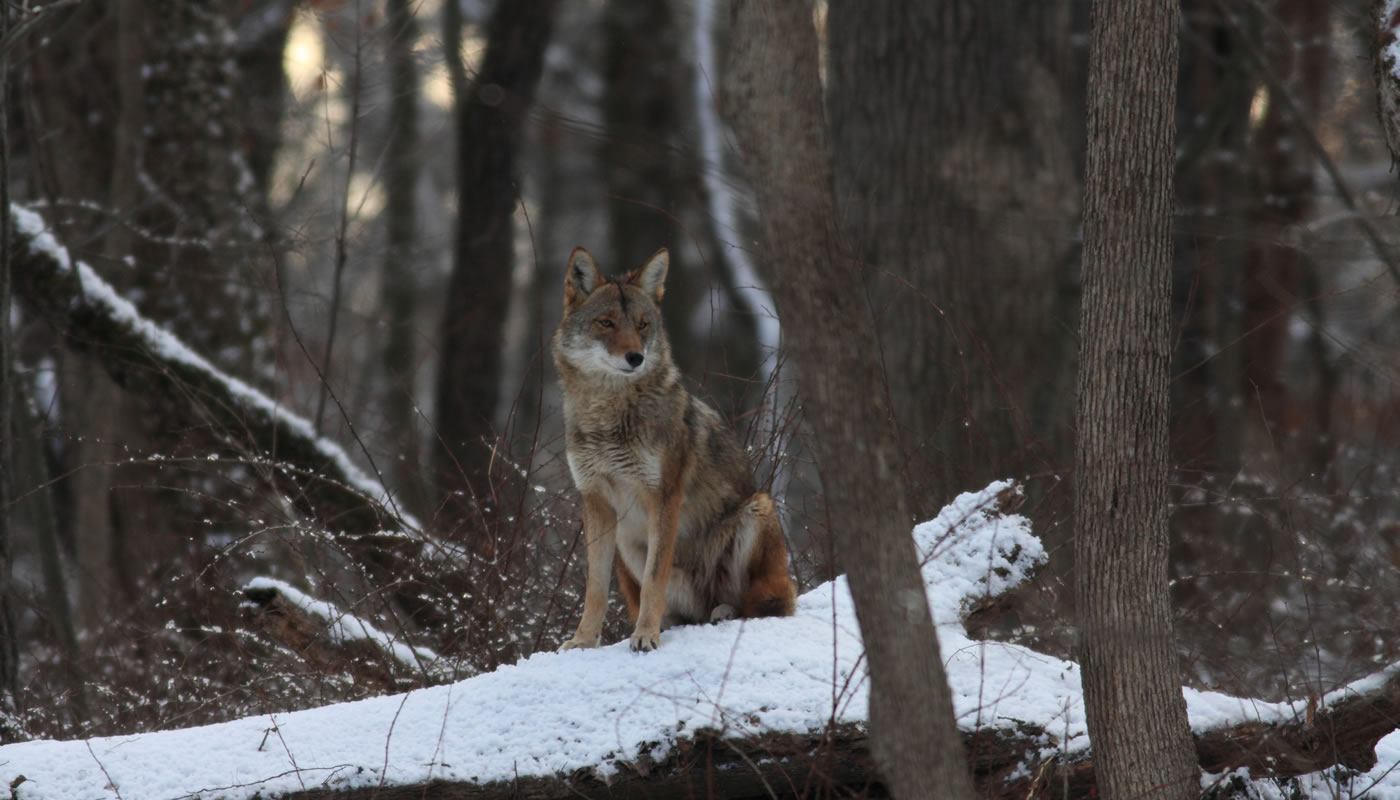When people think of animals and winter, a common scenario comes to mind: a bear hunkering down and sleeping the colder days away, re-emerging in spring well-rested and ready for the new season. And while some of Cook County’s mammals do hibernate through winter, the Forest Preserves is home to an abundance of wildlife, including mammals, fish and herps, each of which prepare for and react to winter differently.
Fish
There are numerous fish species found in the Forest Preserves of Cook County, all of which are very well adapted to survive Chicagoland winters. Because the Forest Preserves’ waterbodies are smaller inland ponds and lakes, there isn’t anywhere for the fish to go when the temperatures begin to drop.
“Fish are cold-blooded ectotherms, which means their bodies adapt to the environment around them. Whether the water temperatures are 70 or 80 degrees or down in the 30s, their bodies just adapt to that,” explains Steve Silic, fisheries biologist for the Forest Preserves.
According to Silic, fish enter a torpor-like state in the winter, meaning there is a reduction of body temperature and metabolism. Because their metabolism decreases, the fish are eating less and exerting less energy. Fish will also head for deeper points of the waterbody, where temperatures tend to be warmer.
“One of the tricks during wintertime for fish is finding an area of the lake that has ample oxygen. As ice forms over a lake, sunlight can’t penetrate into the lake and plant life can’t produce oxygen. Oxygen levels can get a little low in the water column,” says Silic. “That’s the real game fish play in the winter – find a place in the lake that they’re comfortable with the temperature of water but that also has a sufficient level of oxygen.”
Herps
According to George Klut, a naturalist at the Forest Preserves’ Little Red Schoolhouse Nature Center, herps (reptiles and amphibians) are not true hibernators, but instead experience a winter dormancy referred to as brumation. Though similar to hibernation, brumation means that herps will come out during winter if the weather warms up regardless if there is snow on the ground.
“People have observed turtles swimming beneath frozen ponds, along with snakes basking on snow-covered ground and frogs calling on warm winter days,” explains Klut.
In response to winter, herps also build up anti-freeze protein in their blood, and well as increase their glucose levels to prevent freezing.
Visitors interested in seeing first-hand how a herp reacts to winter can head to Little Red Schoolhouse to view the resident alligator snapping turtle.
“The resident herps at the nature centers pick up on the changes in seasons. Even though they’re not outside and are habituated to the inside temperature, they still react and will stop eating – they go dormant,” explains Klut. “It’s very instinctive. Little Red Schoolhouse’s alligator snapping turtle typically stops eating in October and doesn’t restart until about March.”
Mammals
Mammals are commonly seen in winter due to their ability to generate internal body heat, which gives them an environmental advantage. And though some mammals respond to winter with hibernation, some of Cook County’s mammals may not change their activity at all.
“The idea of animals shutting down for the winter is more of a spectrum. Some animals do go into the prolonged hibernation where their bodies almost completely shut down like the classic groundhog or wood chuck,” explains Brian Winters, assistant director of River Trail Nature Center. “On the opposite end, there are many mammals that remain completely active, especially any animal that is a predator like foxes, coyote and mink. Different animals’ activity changes in winter, primarily depending on what their food supply looks like.”
For example, Cook County’s largest marmot, the wood chuck, is a vegetarian. Winter offers very little plant life for a vegetarian, making it hard for those animals to remain active. Leading up to winter, a wood chuck will begin gaining weight so that during hibernation their bodies can pull from their fat reserves.
One mammal that stays active through winter is the beaver, which is remarkably adaptable to its environment. During summer, beavers eat a lot of green plants, but will shift to a completely woody plant diet during winter. They will also plan for potential food shortages leading up to winter. Throughout late summer and fall, beavers will look for sapling trees to chew down and drag to the bottom of their “home” waterbody.
“At the bottom of the river or lagoon, the beaver will stick sapling trees in the mud,” explains Winters. “The effect is that the sapling tree doesn’t rot because of how cold the water is; it acts as a refrigerator. Then, when they can’t get fresh food during winter, they can pull from this storage of food.”
In the middle of the spectrum are animals like raccoons and squirrels, who will change their activity depending on the weather. If it becomes extremely cold or if there are severe conditions, these animals have the ability to temporarily shut down.
For local predators like coyotes, they tend to show less reaction to weather changes because the bulk of their prey is still around and because their bodies grow a much denser fur and longer guard hair, resulting in no skin exposure to the elements. If visiting River Trail Nature Center, visitors may be surprised to find the resident coyote napping outside, unaware of the cold weather.

